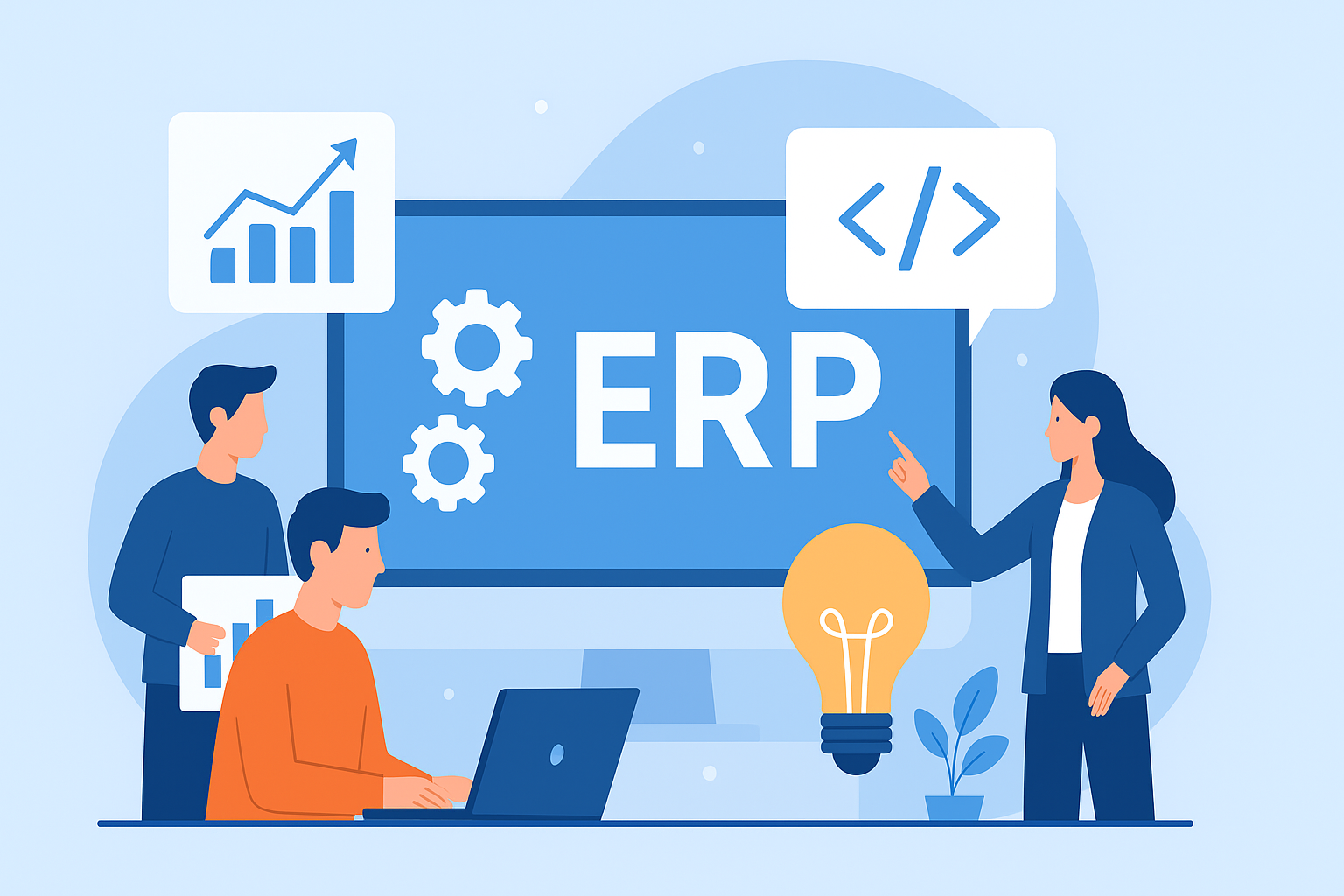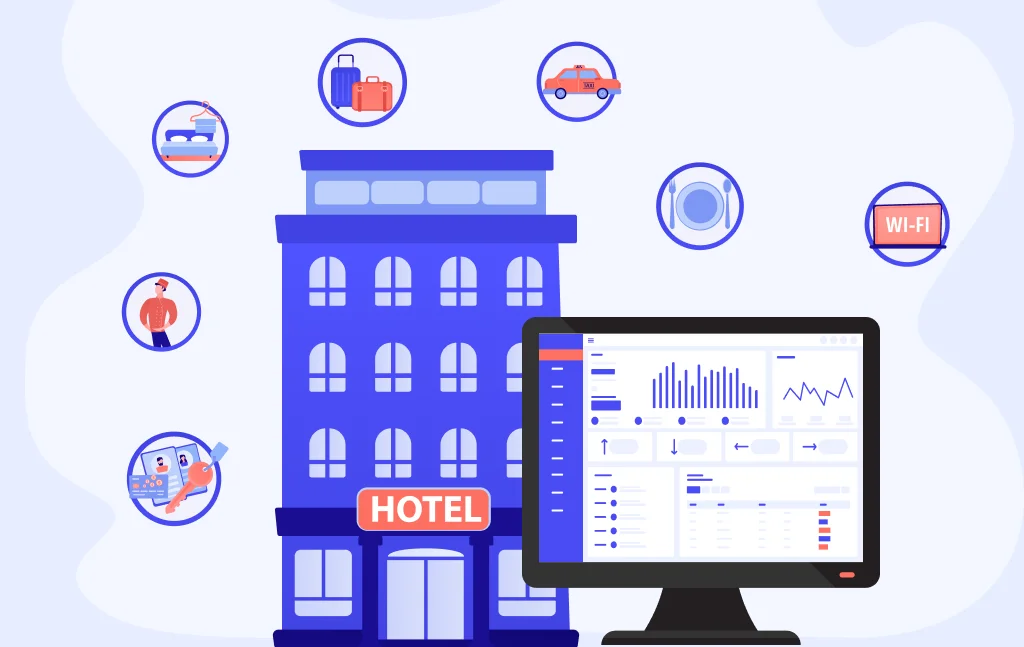What is ERP and Why Do Businesses Need It?
ERP is a system that brings together all core business processes into one central platform. It helps different departments in a company work together by sharing the same real-time data.
Each ERP module represents a major business function, such as:
- Finance
Manages accounting, financial reporting, budgeting, and cost control. - Production Planning
Plans and monitors production to run efficiently. - Procurement
Manages the purchasing of goods and services. - Inventory & Warehouse Management
Tracks stock movement, storage optimization, and product availability. - Sales & Distribution
Handles order processing, delivery, and invoicing. - Human Capital Management
Manages employee data, payroll, training, and development.
What Happens If a Business Doesn’t Implement an ERP System?
A business can still run without ERP, using paper records or spreadsheets. But these methods come with their own challenges:
- Higher risk of human error.
- Slower processes due to manual input.
- Data isn’t connected across departments.
- Lack of proper access control, which could lead to data breaches.
- Inconsistent or redundant data, which can create confusion and impact the accuracy of business insights.
Some businesses choose to use different software for each department,like separate tools for accounting and warehouse management, but syncing all these systems can be very difficult.
Advantages of ERP
Compared to manual methods or using different tools for each department, ERP offers several advantages:
- Data consistency
Everyone works with the same data, reducing errors and mismatches. - Process automation
Saves time and reduces repetitive manual work. - Improved customer service
Real-time, integrated data helps businesses respond faster and more accurately.
Disadvantages of ERP
- High upfront costs
Software, infrastructure, and training can be expensive. - Long adoption time
It takes time to implement and get used to the new system. - Employee resistance
People might be hesitant to change from the system they already know.
Risks of Failed ERP Implementation
- Financial loss
ERP requires a big investment. If it fails, the company may lose money without seeing any benefits. - Business disruption
An ERP that isn’t ready or doesn’t match business needs can interrupt daily operations. - User resistance
If users aren’t involved early or don’t get proper training, they may reject the system. - Data migration issues
Moving data from old systems to ERP must be done carefully—mistakes can lead to wrong decisions. - Too much customization
Over-customizing ERP to fit old habits can make it harder to maintain or upgrade later.
Types of ERP
ERP systems are available in different levels based on business size and complexity:
- Tier 1 (Large Enterprises)
For large companies with complex needs.
Examples: SAP, Oracle - Tier 2 (Mid-sized Companies)
For growing businesses with moderate complexity.
Examples: Microsoft Dynamics, Odoo - Tier 3 (Small Businesses)
Usually cloud-based, affordable, and flexible.
Examples: Hashmicro, Mekari
Estimated ERP Costs
The cost of ERP depends on the platform, number of users, modules, and customization. Here’s a rough estimate for popular platforms:
- SAP
- $1,000/user/month
- Annual implementation: $100,000 – $1,000,000+ - Oracle
- $625/user/month
- Annual implementation: $150,000 – $1,000,000+ - Microsoft Dynamics 365
- $180/user/month
- Annual implementation: $100,000 – $750,000+ - Odoo
- $20–$50/user/month
- Plus $10,000 – $100,000/year for modules and setup - Hashmicro
- Rp 1M – 2.5M/user/month
- Implementation: Rp 50M – 150M+ - Mekari
- Rp 300K – 800K/user/month depending on features
ERP is not just a cost, it is also a long-term investment. With more structured processes, businesses can boost efficiency, reduce errors, and make better decisions based on accurate data.
ERP is a Long-Term Investment
ERP is not just a cost, it is also a long-term investment. With more structured processes, businesses can boost efficiency, reduce errors, and make better decisions based on accurate data.
When is the Right Time to Get ERP?
The decision to adopt an ERP system depends on several factors:
- Financial Condition: Is the company financially ready to invest in an ERP system?
- Business Scale: If the business is becoming more complex and difficult to manage manually, it might be time to consider ERP.
- Integration Needs: If there are increasing challenges in data sharing—especially in companies with multiple divisions and employees—ERP could be the right solution.
Conclusion
Yes, ERP can be expensive, but its long-term value can far outweigh the cost. Every business should take time to evaluate its needs, plan carefully, and choose the right ERP solution to support future growth.
Let's Create an ERP System that Matches Your Business Vision!
.png)

